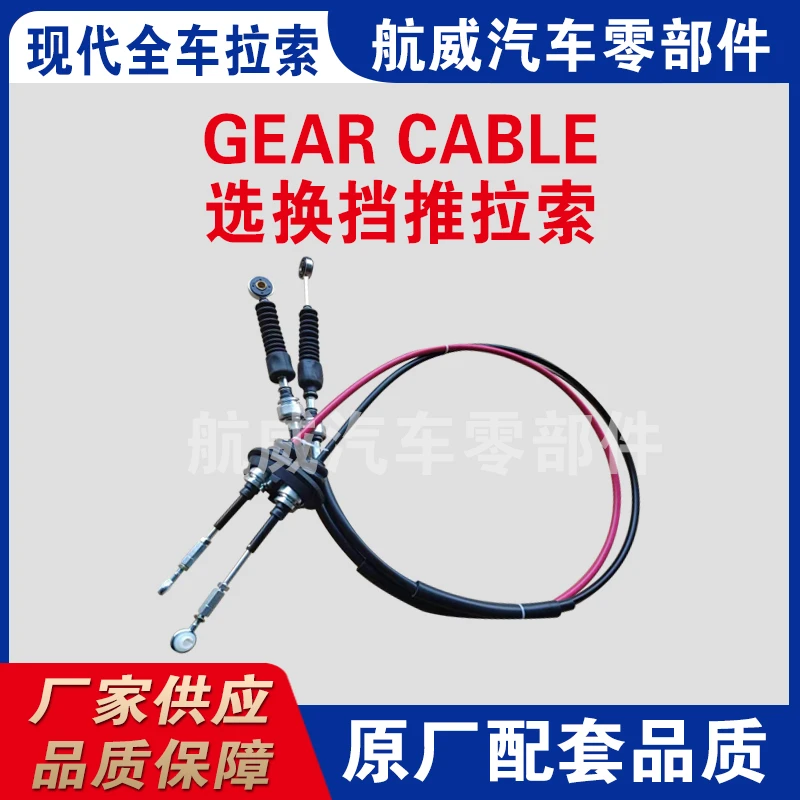Understanding Rear Derailleur Cable Mechanics for Optimal Bicycle Performance
Understanding Rear Derailleur Cables A Key Component of Bicycle Performance
Bicycles have become an integral part of modern transportation and recreation. For those who enjoy cycling, whether for leisure, fitness, or competition, understanding the components of a bike is essential for optimal performance. One critical yet often overlooked component is the rear derailleur cable. This article will delve into the purpose, mechanics, types, and maintenance of rear derailleur cables, highlighting their importance in the cycling experience.
What is a Rear Derailleur Cable?
The rear derailleur cable is a thin, flexible wire that connects the gear shifter to the rear derailleur of a bicycle. Its primary purpose is to transfer the rider’s gear shifting command from the handlebars to the mechanism that moves the chain between different sprockets on the cassette. This system allows cyclists to change gears smoothly, enabling them to adapt to various terrains and riding conditions efficiently.
The Mechanics of Gear Shifting
When a cyclist wants to shift gears, they pull or push the shifter located on the handlebars. This movement generates tension in the cable, which then travels through the housing and reaches the rear derailleur. As the cable tightens, it prompts the derailleur to pivot, shifting the chain from one sprocket to another. A properly functioning rear derailleur cable ensures that these shifts occur swiftly and accurately, contributing to a smoother ride and better power transfer.
Types of Rear Derailleur Cables
There are a few different types of rear derailleur cables available, depending on the bicycle’s gear system. The most common types include
1. Stainless Steel Cables These cables are highly durable and resistant to corrosion, making them suitable for various weather conditions. They also provide excellent performance and smooth shifting.
2. Coated Cables Some cables come with a coating, such as nylon, which reduces friction as the cable moves within its housing. This can result in quicker shifts and a more responsive feel.
3. Performance Cables Designed for competitive cyclists, these cables are often lightweight and engineered for minimal drag and maximum efficiency.
rear derailleur cable

4. Brake and Derailleur Cable Sets Many cyclists opt for sets that include both brake and derailleur cables, ensuring that all essential components are compatible and function well together.
Maintenance of Rear Derailleur Cables
Regular maintenance of the rear derailleur cable is crucial for optimal performance and long lifespan. Here are some tips to keep it in top shape
1. Inspection Frequently inspect the cable for signs of wear or fraying. If the cable shows any damage, it should be replaced immediately to avoid shifting issues.
2. Lubrication Apply a light lubricant to the cable as necessary. This helps maintain smooth movement within the housing and prevents rust.
3. Cleaning Keep the cable and housing clean by wiping them down to remove dirt and grime. This prevents internal wear and maintains performance.
4. Adjustment Sometimes, the cable may require minor adjustments to ensure proper tension. Use the barrel adjuster located on the shifter to fine-tune the cable tension without needing tools.
5. Replacement Over time, cables will naturally wear out. Most cyclists replace their cables at least once a year, or more frequently based on usage intensity and environmental conditions.
Conclusion
The rear derailleur cable may seem like a small part of a bicycle, but its role in the overall functioning of the bike is substantial. By understanding its mechanism, types, and maintenance needs, cyclists can ensure they have a reliable gear-shifting experience. Whether for competitive racing or leisurely rides, a well-maintained rear derailleur cable is essential for achieving the best performance from a bike. Regular care and timely replacements will not only enhance the cycling experience but also promote the longevity of the bicycle itself. Happy cycling!
-
Upgrade Your Control with Premium Throttle CablesNewsAug.08,2025
-
Stay in Control with Premium Hand Brake CablesNewsAug.08,2025
-
Experience Unmatched Performance with Our Clutch HosesNewsAug.08,2025
-
Ensure Safety and Reliability with Premium Handbrake CablesNewsAug.08,2025
-
Enhance Your Vehicle with High-Performance Clutch LinesNewsAug.08,2025
-
Elevate Your Ride with Premium Gear CablesNewsAug.08,2025
